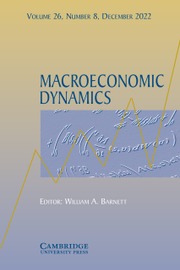No CrossRef data available.
Article contents
The impact of temperature anomalies on production and financial markets
Published online by Cambridge University Press: 07 August 2025
Abstract
Climate change can have significant consequences on the world economy, a possibility explored in this paper. We simulate the world economy using data from 20 economies spanning from 1999 to 2023 in a Global Vector Autoregression (GVAR) framework. Our hypothesis posits that temperature anomaly shocks impact economies through financial markets, which then transmit the shock to production. We model financial markets using four key indicators: currency markets, stock markets, short-term credit markets, and long-term credit markets. Our findings reveal that temperature anomaly shocks: i) trigger a global recession, ii) induce fluctuations across all financial markets, iii) lead to depreciation of domestic currencies, declines in stock markets, and decreases in long-term interest rates, and iv) elicit a minor response in short-term interest rates. These results highlight the presence of spillover effects from temperature anomalies. We validated our findings using alternative configurations (time-varying and fixed bilateral trade), with the main conclusions remaining consistent. Our study suggests that financial markets, particularly the stock market, serve as transmission channels for the consequences of climate change.
Keywords
Information
- Type
- Articles
- Information
- Copyright
- © The Author(s), 2025. Published by Cambridge University Press

